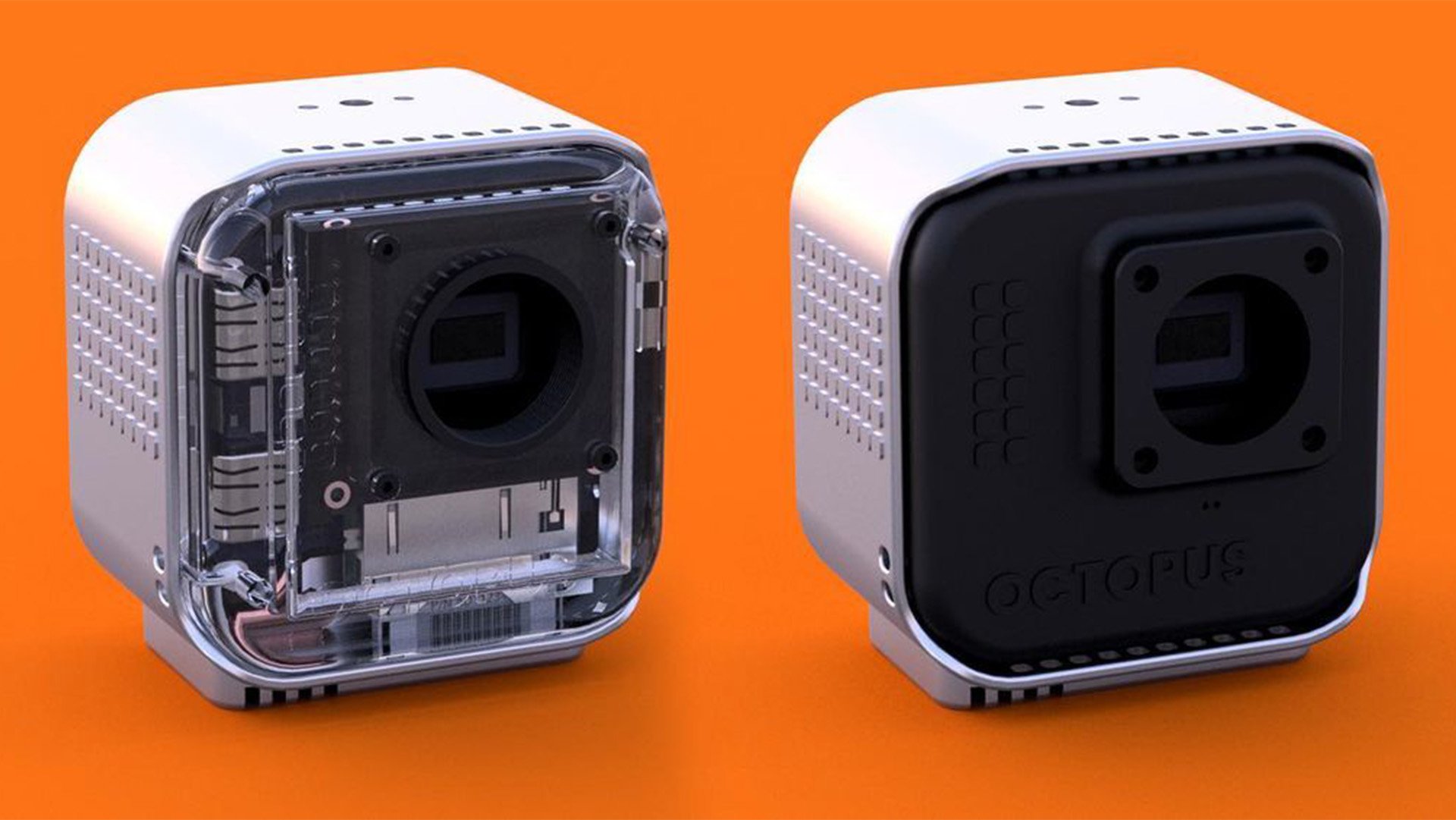
Octopus Cinema (OC) just announced the OCTOPUS16, a Super16 camera that can fit in your pocket. Not only that, it will not burn a hole through it pricing-wise. The camera will support internal 4K RAW video recording while still being budget-friendly. According to OC, the OCTOPUS16 is expected to cost under $1000.



Who is Octopus Cinema
The OCTOPUS16 isn’t the first camera made by Octopus Cinema, but it is the first camera that will be available to purchase. OC’s previous camera, the OCTOPUS CAMERA LF, was an impressive first try for the company – an 8K RAW global shutter camera with a large format sensor.
The only problem is that OC never released it. The production of such a camera was not feasible for OC at the time, as they were a new, small, and self-funded company. Meanwhile, the OCtopus 16 is small and easy to produce, so it will likely not hit the same roadblock.
It’s hard to evaluate the image quality of the OCTOPUS16 from these samples. The samples are from the prototype version, and much can change between what we see here and the final release. Also, this sample footage was shot not on a high-grade lens but on a Cosmicar 12.5mm f/1.9. A lens that you can find for less than $100 on eBay. Due to this lens choice, it’s even harder to evaluate the image quality, as the footage also shows the optical deficiencies of the lens itself.
Why did Octopus Cinema choose this lens for sample footage? Most likely, because it’s budget-friendly, and incredibly small. Traits many Super16 lenses share. OC could’ve used a larger, more expensive lens, but it seems they wanted to show a different use case for the OCTOPUS16. Alternatively, the color science is not there yet, and it would show on a better lens.
Why should you use a Super16 camera?
You can effectively fit an entire Super16 rig in your pocket. The current OCTOPUS16 prototype measures only 8x8x5 cm, and you can find even smaller lenses for the Super16 format. And while it’s true that there are cameras like the Fujifilm XS-20 that have larger sensors but are still comparable in size, there is one thing they still fall behind in.
Price. The smaller the sensor, the cheaper the lenses that you can find for it. Even when you search for cinema-made Zeiss lenses, the Super16 lenses among them will be far more affordable than their Super35 or full-frame equivalents.
And if those aren’t enough for your selection, remember that you can adapt full-frame or APS-C lenses to Super16, but you can’t adapt Super16 lenses to full-frame or APS-C. If you try, you will encounter vignetting as the lens wasn’t designed to cover a larger sensor area.
OCTOPUS16 – features and capabilities


- Super 16mm format UHD-4K CMOS sensor: 3856 x 2180 at 2.9µm pixel pitch, rolling shutter
- Dual gain sensor architecture with 16-bit readout mode for improved dynamic range and latitude
- Internal 4K logarithmically-encoded 12-bit CinemaDNG recording to CFexpress type B cards – prototype bandwidth maxes out at 24fps 4K or 300MB/sec (higher frame rates may be possible – TBC)
- Internal binned CinemaDNG recording up to 90 fps no-crop 1080p
- Interchangeable lens mount with native CS-mount thread (CS flange distance of 12.526mm supports Micro Four Thirds adapters)
- The prototype unit measures 8 x 8 x 5cm, and it features an aluminum frame that helps with heat dissipation
- The brain is built around the open architecture Raspberry Pi Compute Module 4 embedded processor (with integrated WiFi/Bluetooth)
- Integrated 2.8? Rec709 calibrated 285 PPI display running at 72Hz (Precise 24fps monitoring with smooth 72fps user interface) with capacitive touchscreen for easy operation
- Extremely low power draw – 5W while recording RAW at 300MBytes/sec. A 25Wh NP-F battery powers the camera for around 5 hours. Additionally, it can be powered by any 5V USB-C source.
- USB digital audio recording with any USB audio class device
What is expected to change from the prototype version
- 48fps 4K slow motion to internal 8GB ram buffer (TBC)
- Full-size HDMI port (max 1080p)
- 35mm analog mic input and headphone jacks
- Dedicated 3.5mm LTC timecode input
- ?Integrated 6-axis IMU for stabilization metadata
- Integrated NP-F battery plate
- Locking USB-C power input
- The final version might differ a little in size to accommodate the battery plate
- On-board gyro electronics that will be compatible with Gyroflow
Price and availability
The OCTOPUS16 is still in its prototype stage. It’s not clear yet when the camera will be coming out or what it will cost, but as mentioned previously, we do know it will cost under $1000. Hopefully, everything will proceed as planned, and the OCTOPUS16 will be released without issues. I only hope it will not meet the same fate as OC’s previous camera, the OCTOPUS CAMERA LF.
[via CineD]




